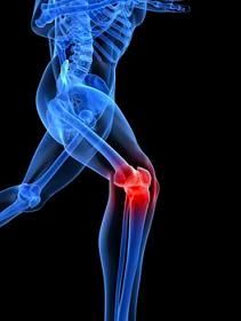Hi everyone! Dr. Lell here. As Portland started getting warmer a few weeks ago, I saw the amount of people jogging by the clinic increase dramatically. Now I’m noticing more and more of something else – joggers with knee braces. This trend inspired today’s topic – Runner’s Knee.
This condition is closely related to Jumper’s knee and patellar tracking disorder and is one of the many conditions lumped in under the umbrella Patellofemoral Pain Syndrome/Disorder. That’s the thing about named conditions that I don’t like very much – the underlying mechanism of injury and pain is usually the same but the name will change depending on where in the body it is and what activity caused it. But I suppose people have to fill the pages of medical text books with something so there ya go. Before we begin, let’s cover the symptoms and relevant anatomy.
SYMPTOMS
In runner’s knee, there is usually pain at the top or sides of the kneecap after or during running, walking, jogging, jumping, climbing, or going up/down stairs. Sometimes there may be swelling and the discomfort can last a day or so.The pain may be located just below the kneecap on the shin; this is when we would call it jumper’s knee. Before we talk about what causes it, we should cover some basic anatomy so that you can really understand it.
ANATOMY
 The major players are:
The major players are:
- The patella (knee cap)
- The Tibia (shin)
- The Femur (leg bone)
- The Quadricep Tendon (attaches to the top of the patella)
- The Patellar Tendon (attaches to the bottom of the patella)
- The quadriceps (the muscles on the front of you leg)
That’s it. The external knee is pretty simple. There are two important things to appreciate and then you’ll completely understand this condition on a fundamental level. First, the patella is not actually secured into place like other joints (because it’s not a true joint). It’s just a bone that is being held in place with a good amount of tension by tendons on the top and bottom and it’s allowed to move a little bit in any direction whenever you bend your knee. Second, movement of this kneecap is caused by the quadriceps (a group of 4 muscles) that attach to the top and sides of the knee and limited by the patellar tendon at the bottom.
CAUSES
The fundamental cause of runner’s knee is muscle imbalance. The patella is a bone health in place mostly by tension wires. If the wires pull with an equal amount of tension in all directions, then the knee works fine. But if one wire pulls harder than the other, then the knee will be thrown off a little bit and this will, in turn, put tension on other areas and mess up the normal motion of the joint leading to abnormal wear and tear. It doesn’t help that there are some anatomical asymmetries of the knee joint and that some of those wires are a little pre-disposed to pull harder than others.
In some cases, the issue is coming from the ankle or hip. Think of the knee as part of a larger chain that transfers weight from your upper body into the ground and then absorbs the shock from that impact with each step. It’s hard to consider the knee without looking at the hip and ankle. But these joint or gait imbalances will set up a compensatory muscle imbalance around the knee joint. So the mechanics won’t change – just the underlying cause.
TREATMENT
Runner’s knee responds very well to conservative treatment like chiropractic care and physical therapy. When I treat someone with this condition, I try to first focus on the knee. Foam rolling the quads and general leg stretches (like this one) along with knee adjustments will do wonders to get the kneecap working properly again. If this doesn’t do the trick long term, it’s time to look above and below with hip stretches or maybe even an orthotic insert. It’s important to stretch before and after each run. If the knee is super-bad, then some simple rehab exercises may be useful balance out a muscle that may not just be tighter than the others, but stronger too.
If the knee is left untreated and activity levels don’t change, runner’s knee can create uneven and unnatural movement in the joint which causes degeneration and arthritis of the knee which can often become so severe that a total knee replacement may be needed.
